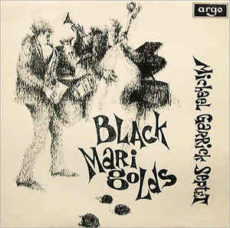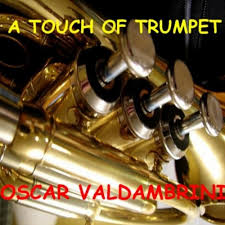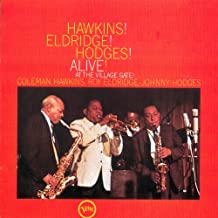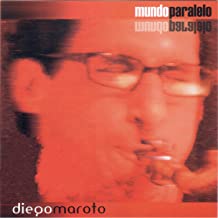
Daily Dose Of Jazz…
Trevor Ramsey Tomkins was born May 12, 1941 in London, England. As a young teenager, he first took up the trombone before switching to the drums on which he made his first professional appearance. Although he studied extensively, mostly in the classical vein, he was deeply interested in jazz, studied harmony and music theory, and in the early 60s moved permanently into this field.
Trevor worked and recorded several albums in small groups with trumpeter Ian Carr, as well as pianist Michael Garrick and saxophonist Don Rendell in the late 1960s and early 1970s. In the Seventies, he was a member of the jazz-fusion group Gilgamesh that was part of the Canterbury scene in Kent, England. He also performed and recorded with saxophonist Barbara Thompson, pianist Mike Westbrook, and others.
After spending some time in the United States, he returned to England and became one of the most sought after jazz drummers in the UK. Tomkins worked with Ian Carr’s Nucleus, Giles Farnaby’s Dream Band, David Becker, and Henry Lowther’s Quaternity. He appears on the 1971 album First Wind by Frank Ricotti and Mike de Albuquerque and on Tony Coe’s 1978 album Coe-Existence. He is also in demand as accompanist to American jazzmen visiting the UK, amongst them Lee Konitz.
Mainstream and bop drummer Trevor Tomkins, who has never been a leader and was a member of various trios and other line-ups with Roy Budd, remains a first call drummer and much-respected teacher on the jazz scene.
More Posts: drums,history,instrumental,jazz,music

Daily Dose Of Jazz…
Oscar Valdambrini was born on May 11, 1924 in Turin, Italy and his professional career didn’t begin until the late 1940s when he played with Rex Stewart. Soon afterward he co-led a small ensemble with Gianni Basso and his association with Basso would continue through the early 1960s.
He also arranged and played as a sideman for Armando Trovajoli toward the end of the Fifties. During the 1960s he played with Gil Cuppini, Duke Ellington, and Giorgio Gaslini, and by the early Seventies, he was working with Maynard Ferguson.
Joining forces once again with Basso the two performed together from 1972 to 1974. He went on to also play with Franco Ambrosetti, Conte Candoli, Dusko Goykovich, Freddie Hubbard, Mel Lewis, Frank Rosolino, Ernie Wilkins, and Kai Winding in the 1970s.
Growing increasingly sick from the middle of the 1980s, trumpeter and flugelhornist Oscar Valdambrini, had a central role in the emergence of a modern jazz movement in Italy, receded from active performance and passed away on December 26, 1996 in Rome, Italy.
More Posts: arranger,bandleader,flugelhorn,history,instrumental,jazz,music,trumpet

Requisites
Hawkins! Eldridge! Hodges! Alive! At The Village Gate! ~ Coleman Hawkins, Roy Eldridge, Johnny Hodges | By Eddie Carter
I was in the mood to hear a live recording and came across a title I’ve not heard in a while, but always enjoyed. Hawkins! Eldridge! Hodges! Alive! At The Village Gate! (Verve Records V6-8504) is one of the smoothest live performances ever recorded with a stellar lineup that needs no introduction. Roy Eldridge on trumpet; Johnny Hodges on alto sax; Coleman Hawkins on tenor sax; Tommy Flanagan on piano; Major Holley on bass and Edward Locke on drums. This album was recorded on August 15, 1962, at the Greenwich Village nightclub. My copy used in this report is the 1962 US Stereo release and Satin Doll starts the set. The 1953 jazz standard was written by Duke Ellington, Billy Strayhorn and Johnny Mercer who added the words after the instrumental became a hit. For those unaware, the song is named after a famous black stripper whose stage name was the inspiration for the song. Satin Doll is one of Ellington’s most recorded compositions and has been featured on jazz, pop, and even soul albums.
The rhythm section opens the song gracefully, then Roy’s muted trumpet leads the sextet through the opening chorus thoroughly relaxed with a lightly applied beat. His muted opening statement is executed with sensitive delicacy, then Hodges opens with a sinuously graceful performance next. Tommy shows off his chops next with a gorgeous interpretation that’s relaxed and gracious. Hawk counters with flowing statements of beauty that develop nicely on the third performance and Major makes his presence felt with engaging ideas on the closer preceding the sextet’s strong culmination.
Perdido by Juan Tizol brings Side One to a close with a lively theme treatment that turns up the heat by the sextet and gets your foot tapping along from the outset. It was written in 1941, became a hit for Duke Ellington a year later on Victor, and lyrics were added by Ervin Drake and Hans Lengsfelder in 1944. Hodges opens a dialogue of scintillating energy that drives the trio confidently through the opening statement. Eldridge takes over with a fiery conversation that’s hot enough to glow on the next reading.
Hawk steps up next for a sizzling performance as warm as the summer sun, then Flanagan shines brightly on the next reading with brisk intensity. Holley gets a few final words of utter enthusiasm preceding the ensemble’s rambunctious reprise, finale and appreciative applause by the audience. The Rabbit In Jazz is a slow-tempo blues by Hodges and Hawkins occupying the entire second side that gives the front line plenty of space to play. The sextet begins the song with a solemn opening chorus segueing into Johnny who glides sensuously through a contemplative performance.
Roy follows, enhancing the flavor of this succulent dish with a solo as sweet as sugar. Coleman offers a textbook example of his virtuosity within the boundaries of the blues on the third statement. Tommy takes the final solo with a short and sweet interpretation emphasizing the expressive beauty of his playing into a fitting finale of a live set capturing three giants at their pinnacle.
The men behind the dials are three elite engineers of the recording industry, Frank Greenwald who worked on many Verve jazz albums. Tom Hidley who’s worked on records by Frank Zappa and The Mothers of Invention. Val Valentin whose work appears on many classic MGM and Verve LPs of the sixties, plus other labels including Bethlehem, Contemporary, Pablo, and Tampa.
The result of their combined efforts is an excellent recording with a spacious soundstage that’s very impressive and perfectly matched to the brilliant musicianship exhibited by the sextet throughout the album. At just shy of forty-minutes, Hawkins! Eldridge! Hodges! Alive! At The Village Gate is a gem of a jazz album that I’m sure will make an invaluable addition to any jazz library! An additional live album by Coleman Hawkins hit the stores in 1963 titled Hawkins! Alive! At The Village Gate also featuring Tommy Flanagan, Major Holley, and Edward Locke!
~ Hawkins! Alive! At The Village Gate (Verve Records V-8509/V6-8509); Perdido (Victor 27880); Frank Greenwald, Tom Hidley, Val Valentin – Source: Discogs.com ~ Perdido – Source: jazzstandards.com ~ Satin Doll – Source: Wikipedia.org ~ © 2020 by Edward Thomas CarterHawkins! Eldridge! Hodges! Alive! At the Village Gate! is a live album by saxophonists Coleman Hawkins and Johnny Hodges with trumpeter Roy Eldridge recorded at the Village Gate in 1962 and released on the Verve label.
Track List | 39:01- Satin Doll (Duke Ellington, Billy Strayhorn, Johnny Mercer) – 11:16
- Perdido (Juan Tizol) – 11:36
- The Rabbit in Jazz (Coleman Hawkins, Johnny Hodges) – 16:49
- Coleman Hawkins ~ tenor saxophone
- Roy Eldridge ~ trumpet
- Johnny Hodges ~ alto saxophone
- Tommy Flanagan ~ piano
- Major Holley ~ bass
- Eddie Locke ~ drums
More Posts: choice,classic,collectible,collector,history,instrumental,jazz,music,saxophone

Daily Dose Of Jazz…
Pee Wee Hunt was born Walter Gerhardt Hunt on May 10, 1907 in Mount Healthy, Ohio. Developing a musical interest at an early age, his mother played the banjo and his father played the violin. The teenager was a banjoist with a local band while he was attending college at Ohio State University where he majored in Electrical Engineering. During his college years, he switched from banjo to trombone. Graduating from the Cincinnati Conservatory of Music, he joined Jean Goldkette’s Orchestra in 1928.
Pee Wee was the co-founder and featured trombonist with the Casa Loma Orchestra, but he left the group in 1943 to work as a Hollywood radio disc jockey before joining the Merchant Marine near the end of World War II. He returned to the West Coast music scene in 1946 and his Twelfth Street Rag became a three million-selling number one hit in 1948.
Hunt was satirized as Pee Wee Runt and his All-Flea Dixieland Band in Tex Avery’s animated MGM cartoon Dixieland Droopy in 1954. His second major hit was Oh! in 1953, his second million-selling disc, which reached number three in the Billboard chart.
Trombonist Pee Wee Hunt passed away after a long illness at age 72, on June 22, 1979 in Plymouth, Massachusetts.
More Posts: bandleader,banjo,history,instrumental,jazz,music,trombone

Daily Dose Of Jazz…
Diego Maroto was born on May 9, 1968 in Mexico City, Mexico. He started taking private lessons in 1985 from Larry Roussell and Alfonso Martinez. He enrolled in the Universidad Iberoamericana in 1987 and the following year joined a jazz workshop at Escuela Superior de Musica where he learned improvisation, arrangement, and composition. He went on to continue private lesson and became an active member of the IAJE, participating in several workshops.
2004 saw Diego putting together a sextet and recording his first album as a leader titled Mundo Paralelo and later in the year shared the stage with Antonio Sanchez at Dizzy’s Club at Lincoln Center. The following year he formed a trio with Gabriel Puentes on drums and Jorge Luri Molina on upright bass and spent the next couple of years performing at festivals, clubs, and paying tribute to Mexican jazz musicians.
As an educator, Maroto has been giving lessons, clinics, and seminars at including Tonica in Guadalajara, Jal alongside saxophonist Donny McCaslin. He is currently in post-production on his soon to be released album Diego Maroto Band Live at the Black Horse.
More Posts: bandleader,composer,history,instrumental,jazz,music,saxophone



